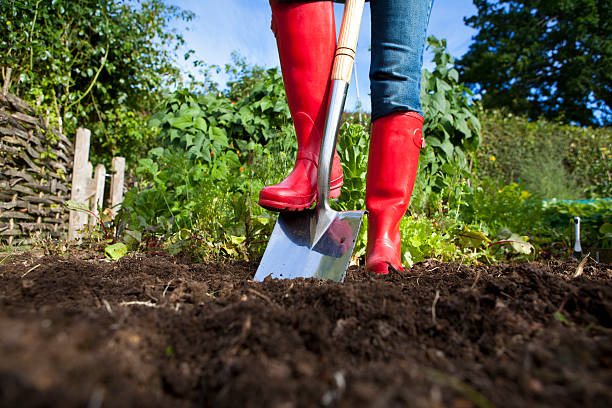It’s important to treat the soil before winter. Just a heads-up: there’s one last deadline.

As we move into autumn, it’s important to give the garden a bit of extra TLC. It’s important to take care of the plants before winter, when they’ll be exposed to frost and other harsh conditions. But it’s just as crucial to prepare the soil for the upcoming season. If you give the soil the attention it deserves, you’ll be rewarded the following year with a rich harvest and healthy plants. So, what’s the best way to get the soil ready for winter so it’s good to go for spring?
Why is it important to prepare the soil before winter?
As the autumn comes around, it’s time for annual plants like flowers and vegetables to retreat. This can leave the ground open to weeds to take over. If you don’t get rid of them now, they could cause some big problems in spring. On top of that, the soil is depleted after the season and loses valuable nutrients, which can lead to soil ‘fatigue’ and even spoilage. That’s why it’s important to get those autumn garden chores done so you can start the spring with fresh, nourishing soil.
Is it necessary to plough the soil before winter?
The first thing you need to do is remove any organic waste and weeds from the soil. Once you’ve got rid of all that, it’s time to plough the soil. Why is this important? Ploughing is a great way to bury topsoil where pests and moulds might be lurking, and it also exposes underground pests that can freeze or become food for birds. Another benefit of ploughing is that it improves the structure of the soil, which helps it to breathe and retain water, which is essential for healthy plant growth in spring.
If you know how to use one, you can use a conventional spade or a gleber for ploughing. This machine lets you adjust the ideal ploughing depth and makes sure nutrients and compost are distributed evenly, so you can work more efficiently and with less effort.
Organic fertilisation before winter
The next thing to do is to fertilise the soil. The best option is compost made from household and garden scraps, which will give the soil a boost with organic matter. If you’re growing vegetables, you can also use manure, which you can apply during ploughing. It’s a good idea to apply it in the autumn, as manure contains ammonia which could damage plants if applied in spring. Autumn fertilisation is a great way to make sure the manure decomposes and any unwanted substances are washed away.
However, you don’t have to use manure every year. If you’ve got sandy soil, you can fertilise every two years. For heavy clay soils, it’ll last up to four years.
Lime the soil in autumn
The last thing you need to do before you get started with planting is to add some lime to the soil. This process increases the pH of the soil, which is ideal for most plants that prefer slightly acidic or neutral soil. Before you add the lime, it’s a good idea to check the pH of the soil and choose the right amount of lime based on the results. It’s best to do the liming on dry days and dig the soil to a depth of about 20 to 25 cm.
As with fertilising, liming doesn’t need to be done every year. For lighter soils, you can wait two years between applications. For heavier soils, it’s every four years.
Mulch the soil in autumn
If neither fertilizing nor liming is planned this year, you can opt for mulching. Mulching protects the soil from frost, prevents weed growth and improves soil fertility. Dry leaves or grass clippings are used for mulching.
Preparation of the soil for winter should take place before frost arrives, ideally in late October or early November. This will leave the soil full of nutrients and ready for new plants in spring.

